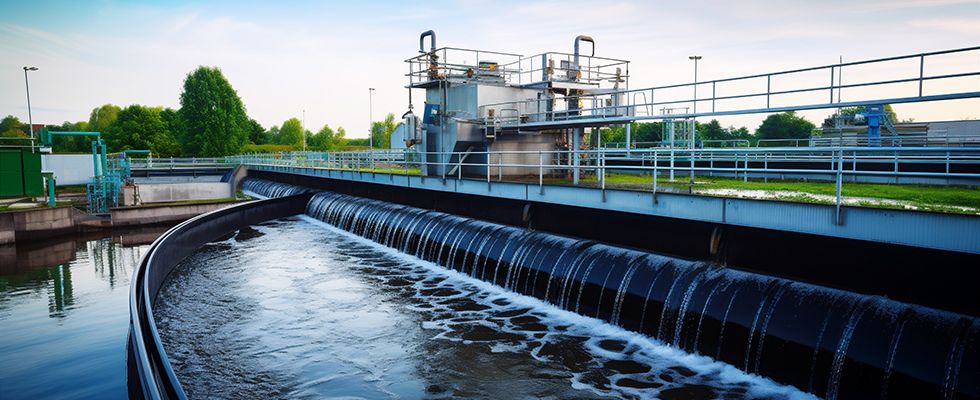
Pumps 101 covered the evolution of centrifugal pumps and their use in sewage transport, changes in the modern waste stream and different nonclog impellers used in sewage pumps. Now, we will venture into the next level of solids-handling solutions: improved impeller designs, volute modifications and different cutting mechanisms.
Improved Impeller Designs & Technology
While traditional impeller styles are still effective in the modern waste stream, solids are still likely to build up and clog the pump in harsh applications. Thus, new impellers with increased solids-handling capabilities have been introduced. Several designs in the market include modifications to traditional semi-open, enclosed and vortex geometries. Improvements in the vane shapes, heights and angles all lead to the ability to pass difficult, stringy solids while maintaining high hydraulic efficiency. Other offerings include improvements to the impeller eye, where solids can build up in traditional designs due to the low velocity in that area. Casting material choices have expanded, and casting quality has improved. A variety of harder metals are available that provide wear resistance in abrasive installs. The material itself does not directly impact solids handling, but impellers that have experienced significant wear are more likely to clog with stringy solids. Some designs include hardened or sharpened vane edges to modify the solids as well. Smoother castings can achieve a high efficiency, and smooth passages remove catch points for the stringy solids. The improvements are not only found in the impellers, but also in the volute designs.
Volute Modifications
Solids handling does not rely on the impeller alone, so volute modifications have simultaneously been occurring. Similar casting improvements that have been applied to impellers have been applied to the volutes; smoother casting passages and advanced materials both improved the solids handling capability of the pump. Aside from the impeller eye, solids can also build up between the volute and impeller, between the impeller and the seal plate and in the pump suction.
The space between the volute and the impeller can change based on the impeller design. Open and vortex impellers have significant space, whereas semi-open and enclosed impellers have minimal clearance, and tight tolerances are often necessary for optimal operation. In either case, solids can build up. Pump features like wear plates, insert rings and volute grooves have been introduced to assist in dislodging or modifying the solids so they do not collect. The area between the back impeller shroud and the seal plate (also known as a back plate) typically has tight clearances, as solids that build up there can cause mechanical seal failure. Features that discourage solids buildup there include pump out vanes on the impeller, grooves in the seal plate and cutting rings to modify the solids so the pump out vanes or grooves can expel the solids.
Solids collecting in the pump suction usually means they are larger than the pump can pass or that other solids have built up in the pump, which has created a catch point for other solids to build up.
Cutting Mechanisms
Different manufacturers have different definitions of grinder, cutter and chopper pumps, but the common thread between them is they modify solids before pumping, reducing the likelihood of clogging.
Grinder pumps are typically smaller, ranging from 1 horsepower (hp) to 15 hp, with discharge sizes ranging from
1.5 inches to 3 inches. Grinding mechanisms consist of two parts that cover most or all the suction: a stationary piece and a rotating piece. Radial designs typically have a stationary ring pressed or pinned into the suction and a rotating cutter that sits inside the stationary ring. The stationary piece in the axial design is a plate rather than a ring, which has small openings for the ground solids to enter and be pumped. The rotating cutter is on the front of the stationary cutter plate rather than sitting inside a ring. Grinder pumps macerate the solids into a slurry suitable to be pumped through the small discharge and pipe sizes.
Cutter and chopper pumps also operate with a rotating cutting mechanism working against a stationary piece. Cutter pumps typically have a lower performance range, producing less flow than chopper pumps. However, this is not always the case, as chopper pumps can have low-flow models, and cutter pumps can have high-flow models. Cutter pumps utilize the impeller edges working against a suction cover, which is often serrated or made of hard materials, to modify the solids during pumping. The solids are cut into smaller pieces or cut into a shape that can be passed. This allows the pump to pass the stringy solids without clogging. Chopper pumps may also use the impeller edges to chop solids against a cutter bar, or the pump will have a slicing blade attached to the impeller that chops against a stationary plate. Chopper pumps slice the solids into smaller, manageable pieces that can be passed through the pump and do well with harder solids as well as stringy ones.

